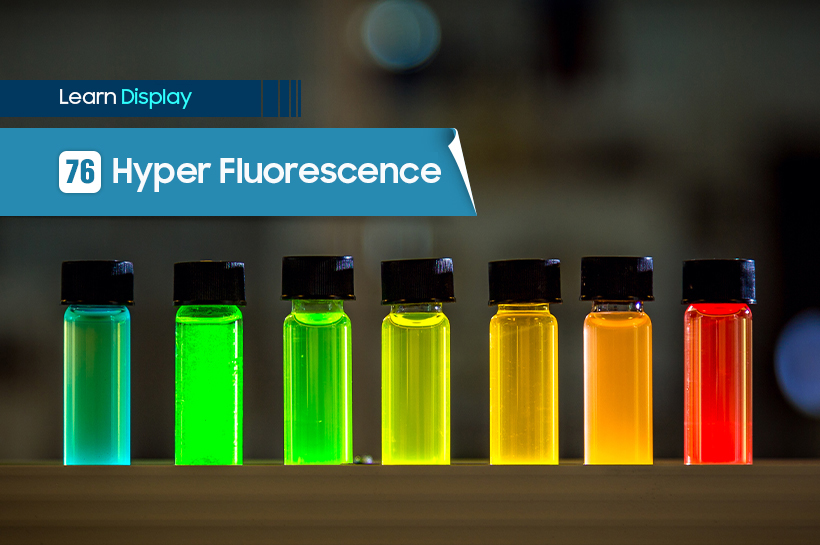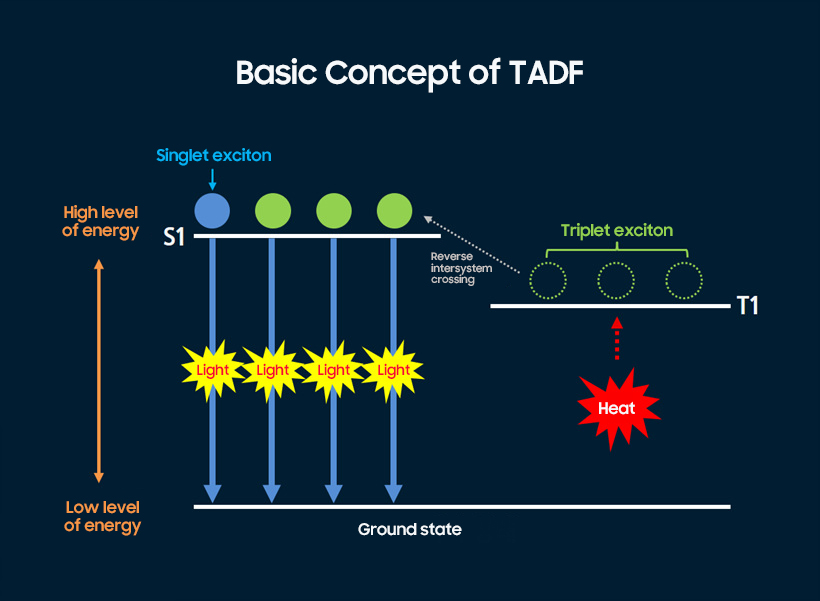
Hyperfluorescence is one of the latest technologies being researched as a form of luminescence for OLED displays.
Hyperfluorescence is similar to thermally activated delayed fluorescence (TADF). Much like TADF, hyperfluorescence moves the three triplet excitons to the location of the singlet exciton and lowers the electrons’ energy level to induce light emission.
*Exciton: A loosely bound pair of an electron and an electron hole. When the energy of an exciton decreases, the amount of decreased energy is released in the form of light.

TADF theoretically reached a maximum level of 100% internal quantum efficiency, but it is less stable compared to traditional fluorescence. Hyperfluorescence was developed in order to implement conventional luminous techniques of fluorescence to TADF while achieving 100% of internal quantum efficiency at the same time.
Hyperfluorescence deposits hosts and dopants, which are the basic components of OLEDs, as well as the TADF dopants into the emission material layer.
* Host: A medium that transfers energy to the light-emitting material in the emission material layer
* Dopant: Light-emitting material in the emission material layer

The high bandgap (S1) energy is achieved by hyperfluorescence as seen in the illustration above. The energy transfer from the excited host to the dopant emits light in accordance with the principle of fluorescence. As a development to complement OLED emitting materials insufficient, hyperfluorescence (HF) is being researched alongside TADF.



